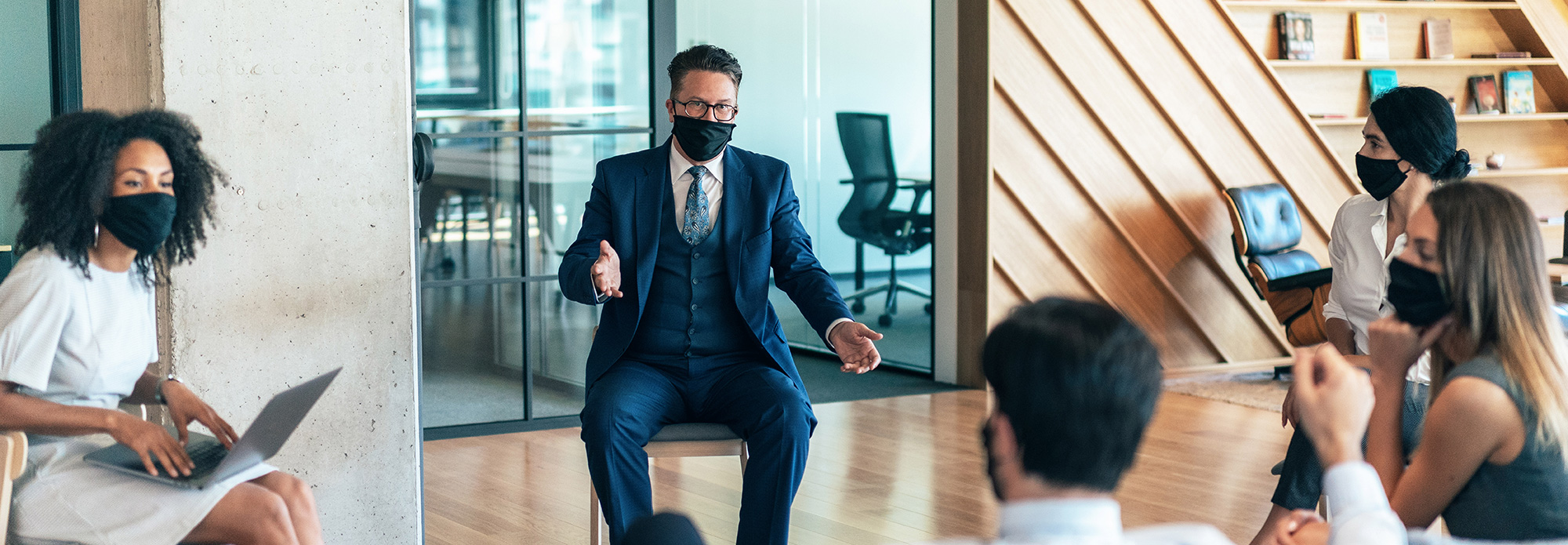As the new year begins, many of you are on the verge of returning to your physical workplaces. Leaders are grappling with many questions – at what pace to re-open, should physical attendance be optional or required, how many days a week etc? And how to harness the best of a hybrid remote and an in-person workplace model? In the midst of all this, many valiant front-line employees have of course continued to work in the field, so this might not feel any different to them. However, for many organisations and for many employees who have gotten used to working from home, the return back to offices will be a significant adjustment.
The “big re-open” obviously means different things to different people. For those of you who flourished during WFH and enjoyed its flexibility, this may be an unwelcome change. For those who struggled with working remotely and missed the camaraderie of colleagues, it’s probably a long-awaited development. Regardless of your personal preference, returning to the office will have a huge impact on your day-to-day routines and frame of mind. You’ll have to readjust to working in a co-located space, as well as adapt to a slew of new precautionary measures.
For leaders, this transition will be particularly challenging: not only do they have to cope with the change personally but also create the right circumstances for their teams to get back to work. Therefore, it is extremely important that leaders plan the return back for their teams thoughtfully and systematically.
So, my first message for 2021 focuses on returning to the office against a backdrop of continuing uncertainty. What steps can you take to ease and manage the transition – for yourself, as well as for your team members?
As an individual
Lockdowns transformed the way we worked in 2020. Some of you spent months adjusting to this ‘new normal’ – and now it’s all set to change once again! Prepare to move forward with the following seven recommendations:
1. Prepare yourself mentally.
Researchers who studied the reopening of workplaces in Wuhan found a strong correlation between mental preparation and engagement among office-goers. Those employees who took the time reorient their mindset showed higher productivity upon their return. In their paper for the Harvard Business Review, the researchers explain:
To foster engagement post-lockdown, it’s important to make sure you’re not just physically ready, but also mentally prepared to return to work. In our surveys, we found that it was very helpful when employees spent some time reviewing their past progress, setting priorities for upcoming goals, and creating short- and long-term to- do lists for themselves, before coming back to work. Just as a bit of stretching can get your body revved up for a physical workout, some simple mental preparation can ensure that you stay engaged when transitioning back to the job.
2. Work out new family routines.
As you return to work, the routines you and your family developed during the pandemic will be upturned. Important questions should be addressed well in advance in order to minimise last-minute panic and stress. If your children’s schools have not yet reopened, who will be in charge of overseeing their virtual classes? If you have a family member who is extra-vulnerable to COVID-19, what protocols will you need to follow to protect them? Discuss these issues as a family and create new systems to make sure nothing slips through the cracks.
3. Plan your return.
Carve out some time to create your return-to-office agenda. What are your personal priorities for the coming days, weeks and months? Projects that were paused at the start of the lockdown may need to be restarted – or abandoned if they have outlived their usefulness.
4. Check safety protocols.
While offices are reopening, things will look very different from the pre-pandemic era. Ideally, your company should have already communicated new health and safety guidelines in a clear manner – from sanitization and masks, to staggered shifts, arrival timings and meal arrangements. If not, contact the relevant person and familiarise yourself with the protocols to minimise hiccups on Day 1.
5. Reset your mornings.
With commutes back in the picture, mornings are bound to be the hardest readjustment for many people. Experts suggest gradually altering your schedule over a few weeks: start sleeping and waking up a little bit earlier, advancing the time by 15 minutes every few days. This allows your body to slowly settle into a new cycle and keeps you feeling well rested.
6. Renew personal commitments.
Over the past 10 months, people have rediscovered the joy and importance of non-work activities. Some of you have formed healthy habits, such as eating nutritious homemade meals and working out regularly. Others have found immense pleasure in having lunch with the family every day and tackling creative projects on weekends.
As our professional lives resume normalcy, some of these rituals will have to change – but that doesn’t mean they have to be discarded. If you found value in eating healthy and exercising, incorporate these habits into your new workday. You could wake up earlier thrice a week to work out, carry packed lunches to the office instead of falling back into a pattern of ordering junk food.
Family rituals can also be adapted: make it a point to have dinner (instead of lunch) together every day, and plan at least one imaginative activity for each weekend. Having an open conversation with your partner and kids will help everyone reset their expectations and re-commit to spending quality time as a family.
7. Safeguard your mental health.
If you’ve struggled with anxiety in recent months, get proactive about your mental health as you return to the office. Take measures to stay emotionally balanced and calm – whether it’s meditating before work, downloading a mindfulness app or scheduling regular sessions with your therapist.
As a leader
The reopening of offices is dogged by COVID concerns: mutated strains, yet another wave of cases, the fear of catching the virus or passing it on to someone at home… Stress levels are bound to be high among employees, affecting their mental wellbeing as well as performance. Under these conditions, how can leaders re-engage their teams and set them up for success? Here are five recommendations:
1. Prepare for the return.
Make sure your team members clearly understand the new protocols, so there is no unnecessary conflict on Day 1. Send across all relevant materials remotely, then schedule a meeting to eliminate confusion. You can also schedule a few team meetings and check-ins over the first week: this will help anchor the team back into the workplace and prevent them from feeling untethered.
2. Demonstrate ongoing commitment to health and safety.
As a leader, you are best placed to ensure that everyone on your team adheres to the new norms; be compassionate but firm. You can even go a step beyond the standards set by local authorities and your organisation. For example, hold shorter meetings with fewer attendees, and maintain six-feet social distance for extended conversations. According to the Wuhan research mentioned above, managers who proactively promote health and safety see huge gains in engagement and productivity – not to mention the trust and respect of their team members.
3. Be consistent.
An important component of leadership during COVID is to walk the talk – all the time. Inconsistency sends a message to your team members that you only care about their safety when it’s convenient. The authors of the HBR article elaborate:
For example, if a barista is confronted by a customer refusing to follow safety guidelines, they may look to their manager to support them in enforcing company policies (potentially at the cost of this customer’s business). If the manager fails to support them and instead allows the customer to skirt the rules, the barista may come to the conclusion that their manager prioritizes profit over employee health and safety.
4. Reset communications.
Once back in the office, establish a regular system of two-way communication. With the situation evolving on an almost-daily basis, team members need to hear from you more frequently. And leaders need to keep their finger on the pulse of the team: How are they handling the transition? What do they need to stay focused and productive?
Dynamic communication can also create renewed excitement and momentum around work. Use thoughtful strategies to celebrate reopening, remind team members of your collective mission, and reconnect with the organisation’s core values. This will go a long way towards building optimism and unlocking purpose-driven innovations.
5. Help the team adapt.
In her Forbes article, Denise Lee Yohn reminds us that team members will need to fully understand and adapt to the various operational shifts that have taken place over the past year:
Employees need to know how changes in your operations impact what success looks like for them and how new company goals or business targets affect how their performance will be evaluated. Conduct re-onboarding sessions to refresh and align everyone and to deliver updated content such as new safety measures or customer policies. And develop retraining or upskilling programs to ensure employees are set up to succeed.
Above all, be empathetic and kind – to your team members, as well as to yourself. It’s been a tough year for most people. Don’t expect things to just snap back to normal. It may take you and your team a while to regain the rhythm of working in the office – and that’s perfectly okay. Look after yourself, look after the people around you and take things one step at a time.








Comments